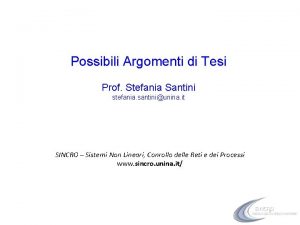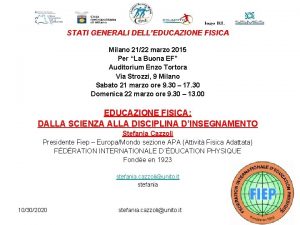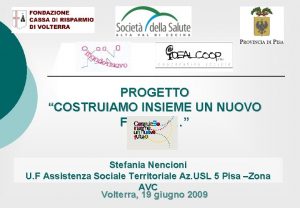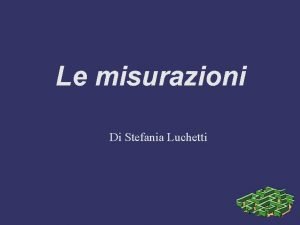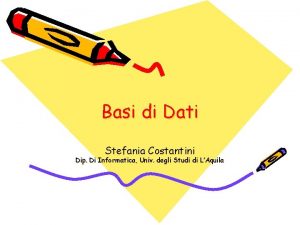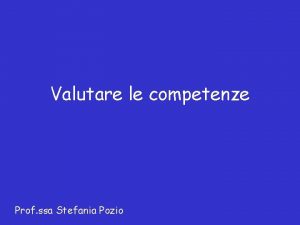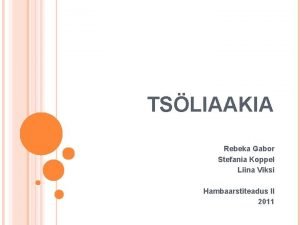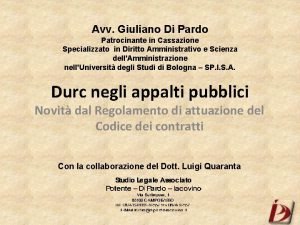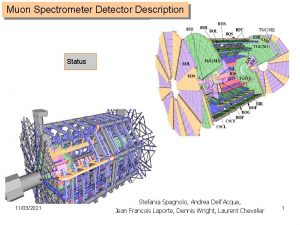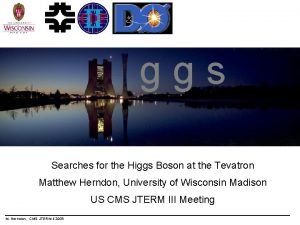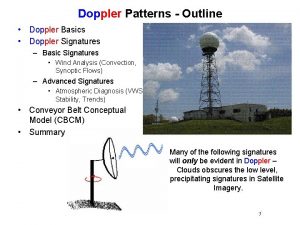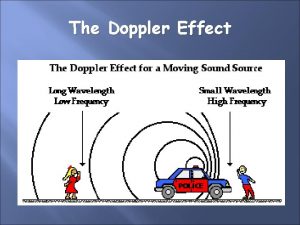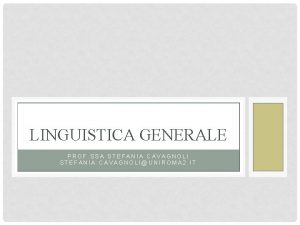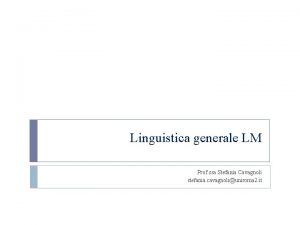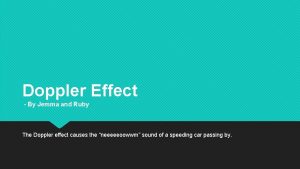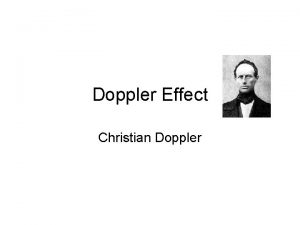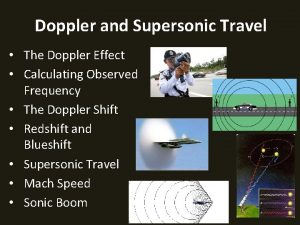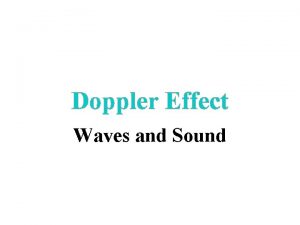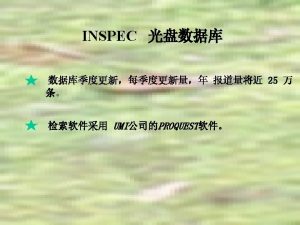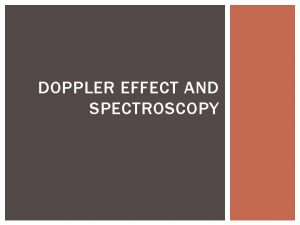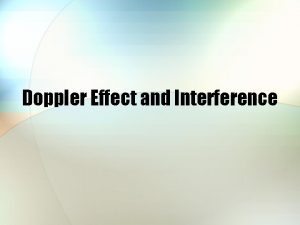Doppler Simulation and the Leslie Julius Smith Stefania


















- Slides: 18

Doppler Simulation and the Leslie Julius Smith, Stefania Serafin Jonathan Abel, David Berners jos, serafin@ccrma. stanford. edu abel, dpberner@uaudio. com Stanford University Stanford, CA Universal Audio Santa Cruz, CA

Overview u The Leslie u Doppler and Leslie effect u Leslie measurements u Leslie effect simulation u Doppler simulation u Conclusions, future work.

The Leslie cabinet u The Leslie is an audio processor used with electronic organs and other instruments.

Leslie’s cabinet (back)

The Leslie and Doppler effect u u A moving source creates a Doppler shift. Multiple, differently Doppler shifted paths from the horn to the microphone.

Leslie simulation u u Block diagram of a stereo multiple-source simulation. The horn-listener paths are separately rendered into three components: 1) Leslie signal path equalization 2) cabinet wall reflection filtering 3) horn radiation pattern 4) time varying delay.

Leslie simulation (ctn. ) u u u To obtain a precise Doppler simulation, we use time-varying delay lines. Time varying delays simulate Doppler shift caused by motion of the source when the delay growth rate -vm/c, where vm is the speed of the source, is set to the speed of the listener away from the source, normalized by the sound speed c. Time varying delay lines can be easily implemented in realtime (see, for example, STK 4. 0).

Doppler simulation u The Doppler effect is simulated by using a time varying delay representing time-varying sourcelistener distance. Speed of the listener Delay growth rate Radian frequency emitted by the source Frequency received by the listener Sound speed

Source/listener motion simulation u u u Moving read/write pointers simulate moving listener/source. Multiple moving sources/listeners are simulated using multiple delay lines. In general, we need as many delay lines as there are sources or listeners, whichever is smaller.

The Leslie’s rotating horn u u The Leslie employs a rotating horn and rotating speakers to choralize the sound. Since the horn rotates within the cabinet, the listener hears multiple reflections at different Doppler shifts. Two horns are apparent, but one is dummy, serving to cancel the centrifugal force of the other during rotation. u

Leslie Free-Field Horn measurements u u The free-field radiation pattern of the Leslie rotating horn was measured using 2048 point-long Golay codes. - The horn response in the plane of rotation and along the axis of rotation was measured using a matched pair of Panasonic microphone elements mounted on separate boom microphone stands.

Leslie horn free-field response Impulse responses measured using 2048 -point-long Golay codes. u The horn angle dependent delay results in Doppler shift with the horn rotation.

Leslie Horn free field arrival time u u The arrival time has been measured by cross correlating the minimum phase and raw impulse responses and computed from geometry, taking horn width into account. Note that the asymmetry in arrival time as a function of horn angle becomes more pronounced with closer microphone placement.

Leslie-Horn Free Field radiation pattern u u Note how the diffuser limits the dynamic range of the radiation pattern. Note also how the main lobe is still present.

Leslie horn Free-Field simulation Free-field signal Measured response Simulated response

Leslie cabinet response u Note the multiple arrival times, which imply multiple Doppler shifts.

Leslie cabinet simulation u Cabinet signal u Measured response u Simulated response

Summary and future work u u u Measurements of the Leslie indicate that the Leslie effect may be modeled as the superposition of a set of differently Doppler shifted propagation paths. A method for Doppler shifting moving sources using a time-varying delay line was presented. Future work will focus on the wooden cabinet enclosure and rotating bass speaker port.
 Santini unina
Santini unina Julian tuwim rodzina
Julian tuwim rodzina Stefania zaninello
Stefania zaninello Stefania albertani
Stefania albertani Stefania costantini hot
Stefania costantini hot Stefania cazzoli
Stefania cazzoli Stefania nencioni
Stefania nencioni Stefania da pelo
Stefania da pelo Costantini stefania altezza e peso
Costantini stefania altezza e peso Stefania lanaro
Stefania lanaro Stefania costantini
Stefania costantini Stefania pozio
Stefania pozio Hambaarstiteadus
Hambaarstiteadus Stefania padoa
Stefania padoa Stefania migliorucci
Stefania migliorucci Stefania di pardo
Stefania di pardo Ted koppel bio
Ted koppel bio 11032021
11032021 Stefania xella
Stefania xella
